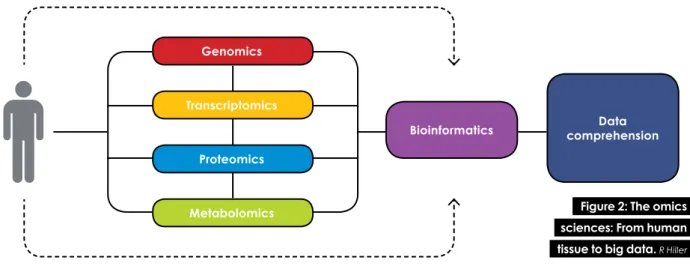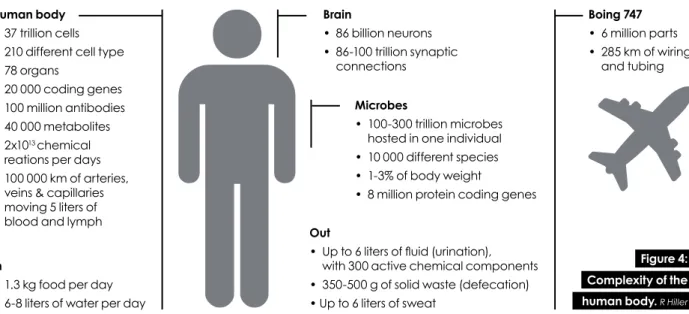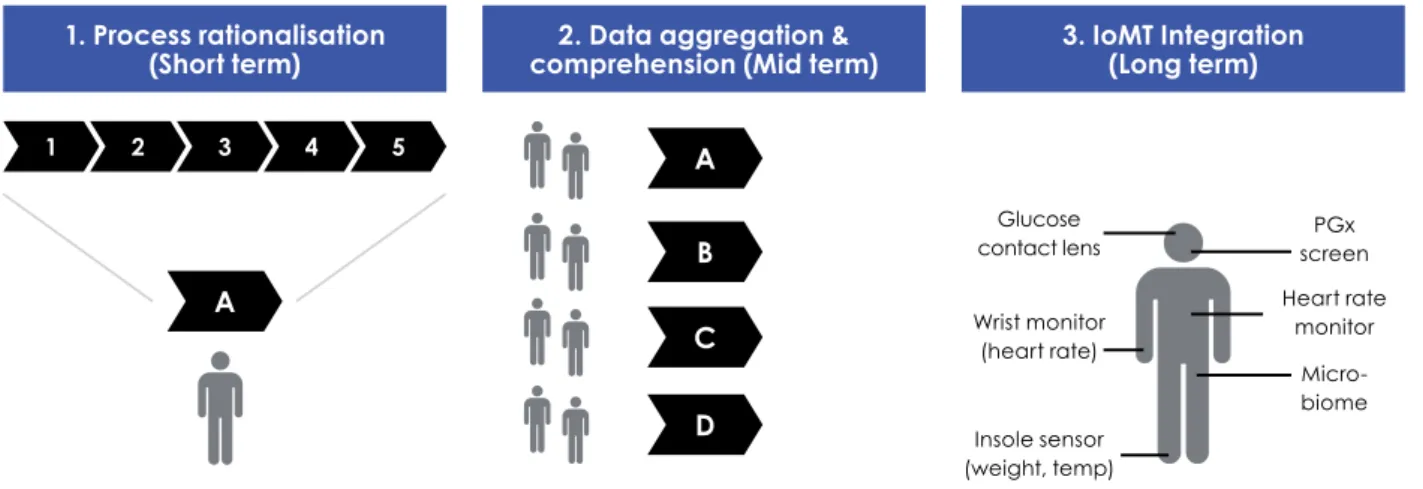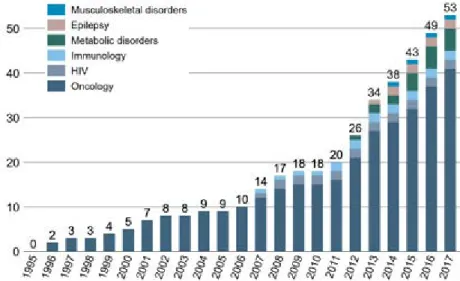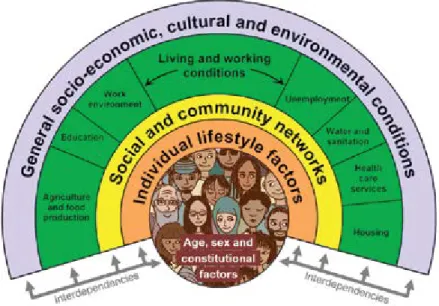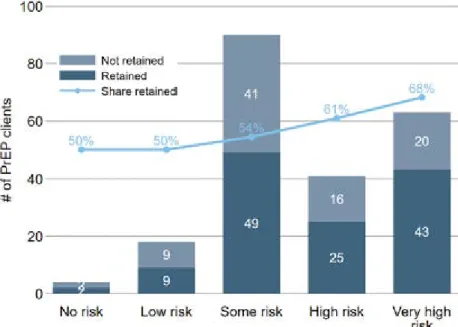Precision medicine applications can be grouped into the following areas: (i) applications that enable in-depth molecular profiling of biological disorders and thereby enable better diagnosis and more effective treatment; (ii) applications that allow the classification of patients into groups of responders to treatment or therapy; (iii) applications that predict disease risk or treatment outcomes. Therefore, high-resolution typing of stem cell donors is an early example of precision medicine in Africa.
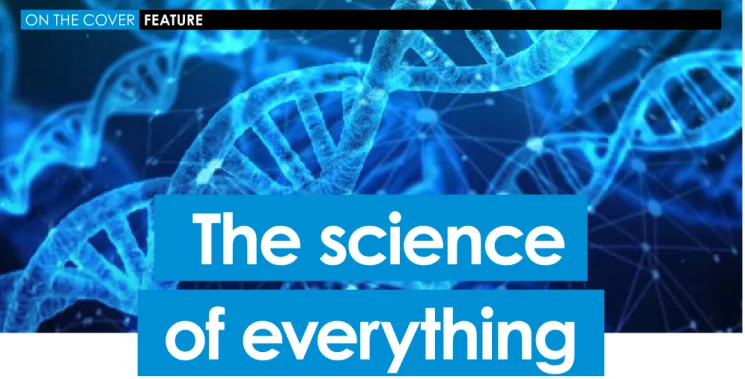
NEWS EXTRA!
A team of international researchers, coordinated by Professor Andrew Forbes from the School of Physics at the University of the Witwatersrand in Johannesburg (Wits), South Africa, and Professor Ling Cheng from the School of Electrical and Information, recently met in South Africa to tackle this problem. A prototype of the device, which can connect remote places to fast, reliable internet, is being tested by the team at Wits University.
FROM ONE-SIZE-FITS-ALL TO PRECISION MEDICINE
More and more tools and technologies from genomics to big data can be used to help deliver the right health intervention at the right time to the right person or population.
Precision medicine – moving away from one-size-fits-all
FEATUREON THE COVER
PERSONALISED MEDICINE: HOPE OR HYPE?
FROM PRECISION MEDICINE TO PRECISION HEALTH
FROM PRECISION HEALTH TO PRECISION
PrEP is a combination of antiretroviral drugs that HIV-negative people can take to reduce the risk of HIV infection. Since 2015, the World Health Organization has recommended that PrEP should be available as an additional prevention option for people at high risk of HIV infection.
WHAT IS THE
Increased knowledge and more data about population-level determinants of health can help to better target population health interventions. Knowing which groups of people in a population may be more likely than others not to continue with a health program, such as PrEP, can help increase program success by allowing program coordinators to tailor care to the different needs of special groups of people, such as those .
DIFFERENCE BETWEEN PRECISION MEDICINE
For example, we found in the recent study in the Kingdom of eSwatini that young people, people who do not know the HIV status of their partners or those with low self-perceived HIV risk are less likely that others continue with oral HIV pre-exposure. prophylaxis (PrEP) after one month of taking PrEP (Figure 4) [7].
OUTLOOK AND CHALLENGES FOR PRECISION HEALTH
The availability of genomic data has sparked a wave of hope for advances in precision health following the Human Genome Project. Challenges are to mainstream precision health thinking in all areas of health care and to assess when and which precision health approaches can contribute to improving health outcomes.
DIFFERENCE BETWEEN PRECISION HEALTH AND
Since then, Precision Health has had its ups and downs, suggesting there is much more to discover. Therefore, precision medicine in the form of genetic information to improve drug targeting is of minor importance to current population health.
DRUG DOSAGE AND RESPONSE: IT’S PERSONAL
GETTING PERSONAL ABOUT PSYCHIATRY
PHARMACOGENETICS IN AFRICA
ON THE COVER FEATURE
This notable example is one of many, and the multitude of drugs for which pharmacogenetic indications currently exist can be viewed on the Food and Drug Administration (FDA) website: https://www.fda.gov/Drugs/. This applies to psychiatric disorders (mental illnesses), where pharmacogenetic research is still a long way off and where personalized medicine remains elusive, but not out of sight.
MENTAL ILLNESS
Pharmacogenetic testing is now widely used to determine which forms of CYP2C9 and VKORC1 a patient has, and it is the combination of variants in these two genes that determines the optimal dosage of warfarin to be given to a specific individual.
IT’S COMPLICATED
VARIANT
PHARMACOGENETICS
By interacting with our genes and influencing their regulation, the environment we are exposed to can increase our risk of developing psychiatric disorders. Because of these interrelated genetic and environmental factors, psychiatric disorders are often complex and extremely difficult to define or treat.
MEDICINE IN MENTAL ILLNESS: WE SHOULD
When this regulation is disrupted in some way, it can lead to abnormal cell functioning and contribute to the development of psychiatric disorders. The answer can be discovered by exploring our environment, including the food we eat, whether we smoke or use drugs, whether we are exposed to certain chemicals or toxins, or whether we have experienced trauma in the early stages of our lives.
GENE REGULATION
Turning genes on and off is a normal and important part of cell development and function. However, it is imperative that we advance our knowledge of the underlying mechanisms involved, as understanding how and why these disorders exist can help us find better ways to treat them.
REMISSION
This underscores the need to find new drugs and safer treatments and underscores the growing need to use personalized medicine in the treatment of psychiatric disorders. A very well-studied set of genes in the context of drug response is the CYP gene family.
CURRENT CHALLENGES IN THE AFRICAN CONTEXT
These genes include the CYP2C9 gene, previously discussed in the context of warfarin metabolism. All of these genes are involved in determining the rate at which individuals break down drugs in the body, which directly affects the effects of those drugs.
WE’RE NOT SO DIFFERENT AFTER ALL
In fact, 70% of African countries allocate less than 1% of their already small health budget to mental illness. The first step to establishing true personalized medicine is to examine the pharmacogenetics of the population in which it will be used - the 'personal'.
HARNESSING THE POWER OF AFRICAN GENETICS
Because people live longer in Africa than anywhere else, it is also the most genetically diverse continent in the world. In the future, tests that can be cheaply and specifically designed to diagnose or predict drugs in specific ancestry groups will be a reality.
RECOMBINATION
This means that the older a population is, the more times recombination has occurred and the more genetic variation that population has accumulated. Further emphasizing the need to study African populations, the rich genetic diversity of African individuals facilitates pinpointing the precise genetic differences—down to individual variants—that are associated with a specific treatment outcome.
HAPLOBLOCK
Louise Warnich is a Professor of Genetics and Dean of the Faculty of Natural Sciences, Stellenbosch University. Robin Emsley) in the Department of Psychiatry at Stellenbosch University, the US/UK MNR Unit on Risk and Resilience in Mental Disorders, and is a fellow of the Global Initiative for Neuropsychiatric Genetics Education in Research (GINGER) program of the Harvard TH Chan School of Public Health and MIT.
Faculty of Science
Dr Celia van der Merwe attended Stellenbosch University for her BSc in Human Life Sciences in 2007. She then completed her honors degree in Medical Physiology and went on to obtain her MSc and PhD in Human Genetics from Stellenbosch University with a focus on the genetic etiology of Parkinson's disease.
Mathematics Applied Mathematics
She is interested in understanding the complexity of the genetic similarity between psychiatric disorders, their underlying common biological pathways, and how this can be applied to unique African populations. Dr. Nathaniel McGregor graduated with a BSc in Molecular and Cellular Biology in 2006, a BSc Honors in Genetics in 2007 and an MSc (cum laude) in 2009, all from Stellenbosch University.
Biochemistry Microbiology
Ellen Ovenden is originally from Johannesburg but has been living in the Western Cape for almost ten years. In her free time, Ellen nurtures her obsession with film and enjoys experimenting with new dishes in the kitchen.
Geoinformatics Earth Science
In 2015, she obtained her Master's degree, focusing on the complex genetic regulatory mechanisms associated with antipsychotic treatment response in schizophrenia. Her current research interests focus on genetic variation in pharmacogenes in South African populations and the application of pharmacogenomics to optimize therapies in schizophrenia.
Chemistry and Polymer Science
Ellen's PhD extends this research by adding epigenetic regulation to the mix, a component of psychiatric illness that has recently come to the fore as a key player. He then ran the company's molecular diagnostics lab for a year and a half after starting his PhD (psychiatry), where he focused on discovering new candidate genes that might be involved in anxiety disorders.
Fields of study
Corresponding electron energy loss data provide information on the chemical composition of the platelets and the nature of the chemical bonds between atoms. Using electron imaging techniques with atomic resolution, we answered the question of the atomic arrangement of atoms in platelet defects in diamond.
Science Clubs
A massive effort aimed at improving levels of scientific literacy and increasing the number of students choosing science and technology-based studies and careers has been carried out since the dawn of democracy. How do we maintain and transform the consciousness developed for continuous active performance and participation in science and technology.
SCIENCE CLUBSEDUCATION
Cleithrum of Tutusius
Waterloo Farm
Cleithrum of Umzantsia
High latitude Devonian tetrapod remains form
The friendly receptionist takes you to the computer, where she has access to all your data, from birth onwards. For example, you may only want to receive information about medical conditions that can be treated.
WHAT IS PRECISION MEDICINE?
You will meet with a health advisor who will explain which tests can be performed and what the possible results might be. You sign a consent form stating what information you would like to receive and what you would rather not know.
Challenges and opportunitiesPrecision Medicine for Africa
Two weeks later you return and see the doctor who makes an accurate diagnosis of you. In this world, money is no obstacle, all your data is stored securely and your identity is protected, but above all, we have the knowledge to make direct and accurate connections between the test results and your current and future health.
HOW DOES THIS DIFFER FROM CURRENT MEDICAL PRACTICE?
FEATURE
WHAT ARE THE AREAS OF MEDICINE THAT ARE CLOSEST
This drug, called imatinib (or sometimes glivec), was called the golden bullet in the fight against cancer and is one of the first examples of a precision medicine approach to treating cancer. It has long been known that not everyone responds to a specific drug in the same way.
HOW COULD ONE APPLY PRECISION MEDICINE TO
In the late 1990s, a molecule was identified that would competitively dock into the pocket of the hybrid molecule to prevent other proteins from being phosphorylated. In practice in some parts of the world, patients must be tested for specific variants before a doctor is allowed to prescribe certain medicines.
COMMON COMPLEX DISEASES?
At the region where the parental chromosomes have broken and reattached incorrectly (a process called translocation), two different gene segments are placed next to each other to form a hybrid gene (BCR-ABL) that gives rise to an abnormal hybrid protein . This hybrid protein has a special pocket that allows other proteins to attach and then add phosphate molecules to those proteins, thereby changing their function and causing a process of abnormal cell division, ultimately causing CML.
INTERPRETING DNA SEQUENCE DATA CAN BE
IS IT POSSIBLE TO APPLY THE CONCEPT OF PRECISION
Efavirenz has been found to have serious side effects in many individuals of African descent. Using a precision medicine approach, it was discovered that a genetic variant in the CYP2B6 gene causes the body of individuals who have this genetic variant to break down (or metabolize) efavirenz much more slowly.
THE PROMISE OF PRECISION MEDICINE FOR AFRICA
In countries that do not have large resources to cover the medical care of all their people, one may wonder how they can afford expensive precision medicine tests and approaches. Side effects include dizziness, nightmares, insomnia, nervousness, cognitive dysfunction, depression, suicidal ideation, and anxiety, and therefore many patients simply stop using the medication.
CURRICULUM CORNER
The mouths of today's crocodiles inspire fear and awe, with their wide opening and the largest known bite force in the vertebrate kingdom. Published today in the American Museum Novitates, Witwatersrand PhD candidate Kathleen Dollman and Professor Jonah Choiniere sought to further investigate the mouth of one of the earliest common and least understood groups of crocodilians, the shartegosuchids.
From DNA to Doctor
BUILDING BLOCKS OF LIFE
GENES AND MUTATIONS
WHAT IS A CELL?
WHAT IS DNA?
Everyone gets sick now and then, and it's usually resolved with a quick doctor's visit, some medicine and some rest. Since it is impractical for DNA to leave the nucleus, a message is sent in the form of RNA molecules.
DNA CAN EASILY BE EXTRACTED FROM CELLS
DNA directs protein synthesis by directing combinations of amino acids (the building blocks of proteins) in a specific order. RNA, ribonucleic acid, is a temporary guide used to link amino acids into long chains that are then folded into proteins.
HOW DO WE IDENTIFY THE MUTATIONS OR VARIANTS THAT
The information stored in DNA is linear, it is a long line of code, which is useful for storing so much information in such a small place. Protein shapes are critical to their function, so any change in DNA can lead to a different amino acid being inserted into the sequence, which can change the final shape of the protein.
FOLDING OF PROTEINS
WHAT ARE AMINO ACIDS & PROTEINS?
WHAT IF THERE WAS A CHANGE IN THE CODE?
HOW DO THESE CODED MESSAGES WORK?
It can tell us whether a person has inherited the same base at a particular position from their mother and father and therefore is. DNA sequencing ensures that every position in the DNA sequence is identified and that all variations can be detected, including variants that have not yet been discovered.
FROM DNA VARIATION TO PRECISION MEDICINE
DNA genotyping array, is used to identify the variants that an individual has at predetermined regions of the DNA.
WE PRESENT TWO DIFFERENT SCENARIOS FOR PRECISION
DNA EXTRACTION
Swirl your saliva around in your mouth
Add one or two drops of dishwashing
Take a pinch of salt in your fingers
Add a small pinch of meat
Now slowly add about 4-5 ml of surgical
DNA GENOTYPING ARRAYS
There is much more work to be done in Africa before we can use pharmacogenetics here, because African populations have not yet been genetically characterized to the same extent as others around the world.
THE SECOND EXAMPLE IS OF THE USE OF
PRECISION MEDICINE IN TREATING CANCER
DNA SEQUENCING
BREAKING DOWN MEDICINE VARIANTS IN THE ENZYME A GENE
Mahtaab Hayat is currently a PhD student at the Sydney Brenner Institute for Molecular Bioscience (SBIMB), University of the Witwatersrand, Johannesburg. She is an executive member of the SBIMB outreach program and the South African Society for Bioinformatics Student Council.
TREATING CANCER - LEUKAEMIA
The targeted drug is adapted to the shape of the protein and ensures that the mutated protein does not send growth signals to the cells, thus stopping cell growth. If you would like to contact them with any questions or invite them to your school (limited to Gauteng and surrounding areas), please contact: [email protected] Jorge da Rocha (MSc), is a PhD student at the Sydney Brenner Institute for Molecular Biosciences, University of the Witwatersrand.
BCR ABL 1
In the figure below, the protein that promotes extensive cell division in cancer cells is inhibited by targeted treatment (with Glivec, also called Gleevec or Imatinib). These artworks and descriptions were developed by the Sydney Brenner Institute for Molecular Bioscience and Wits Division of Human Genetics Community Outreach Program (SCOP).
HOW CAN PRECISION MEDICINE HELP?
"Unfortunately, the skull is very fragmented and much could have been said about the identity or anatomy of the Jacovec specimen earlier." The Jacovec skull illustrates the importance of the Sterkfontein fossil specimens to our understanding of human evolution, says Beaudet.
BOOK REVIEW
THE EXTENSIVE FYNBOS
FLY FISHING IN THE OKAVANGO
Subscribe now to have four quest issues mailed to you
SUBSCRIBE!
SUBSCRIPTION FORM 2018
Payment options
BACK PAGE SCIENCE
WE ARE IN THE MEGHALAYAN AGE We are living in a newly named geologic
THE OLDEST LIGHT IN THE COSMOS
JUPITER’S MANY MOONS
QUEST MATHS PUZZLE NO. 46
WIN A PRIZE!
THE FACULTY OF SCIENCE
UNIVERSITY OF JOHANNESBURG
DYNAMICALLY
SHAPING
THE FUTURE
A BROAD SUBJECT CHOICE
EXCELLENT TEACHING AND ENGAGED LEARNING
EXPOSURE TO PIONEERING ACADEMICS, WHOSE RESEARCH IS INTERNATIONALLY KNOWN
SUPERB FACILITIES
HIGH GRADUATE EMPLOYMENT RATES
TOP-QUALITY STUDENT LIFE IN A SPECIAL LOCATION
Academy of Science of South Africa (ASSAf)
